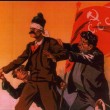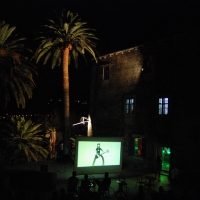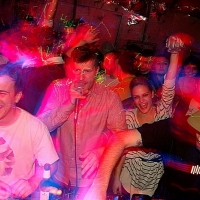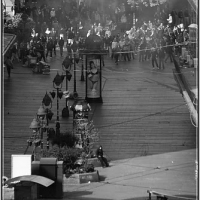Did you know that fifty years ago, Yugoslavia was at the forefront of computer-based art? Back in the day, it was a novel idea
Beginning in 1961, a group of artists in Zagreb began experimenting with using the computer to make art. Fascinated by the aesthetics of science and the computer’s potential as a tool for liberation, the New Tendencies movement went on to produce a diverse body of computer-generated images and kinetic installations. While the group’s blocky pixels and blinking walls of light look charmingly retro today, their ideas about the potential of computer technology seem even more displaced from the 21st century. In much the same way that their 1960s contemporaries touted the transformative power of psychedelic drugs, the New Tendencies approached this new machine as something mystical and wondrous, a tool to escape rather than simulate lived experience.
During their brief but euphoric existence, the New Tendencies movement turned socialist Yugoslavia into an international hub for computer scientists, artists and theorists interested in exploring the intersection of art and computer technology. Operating with the support of the Gallery of Contemporary Art (today the Museum of Contemporary Art Zagreb), NT hosted a series of successful exhibitions and published nine issues of a multilingual magazine called Bit International.
Their efforts received significant attention in the art world, and during the early 1970s the movement was invited to exhibit its works at the Louvre and the MoMA in New York. As a result of this exposure, the mainstream press took notice: from a scanned nude photo of postmodern dancer Deborah Hay, two NT artists made a grayscale mosaic of typographic symbols chosen for their brightness. Though the image was likely the first computer-generated nude, it was published in the New York Times.
Coinciding with this year’s fiftieth anniversary of the founding of the New Tendencies movement, the MIT Press released a book entitled A Little-Known Story About a Movement, a Magazine and the Computer’s Arrival in Art, New Tendencies and the Bit International 1961-1973.
Though largely forgotten by the public and ignored by art historians, this new book reminds us why the group was so remarkable: while the notion of computer-generated art as revolutionary may seem naïve today, during the 1960s, computers filled the space of several large rooms and were rarely accessible outside of corporate, research or military environments. The notion that artists and the public should have access to such technology was itself revolutionary. And because NT was founded the same year as the Non-Aligned Movement, the group undoubtedly benefited from the unique cultural space that was 1960s Yugoslavia: in Zagreb, artists and scientists from both the Eastern and Western blocs could meet in a socialist country during the height of the Cold War to create works relatively unconstrained by the aesthetic dictates of socialist realism.
Yet what remains most interesting about New Tendencies is that they envisioned a technological future altogether different from that which exists today. As Vladimir Bonacic, one member of the group, cautioned all the way back in 1969, “the computer must not remain simply as a tool for the simulation of what exists in a new form… the computer gives us a new substance, it uncovers a new world before our eyes.”

















